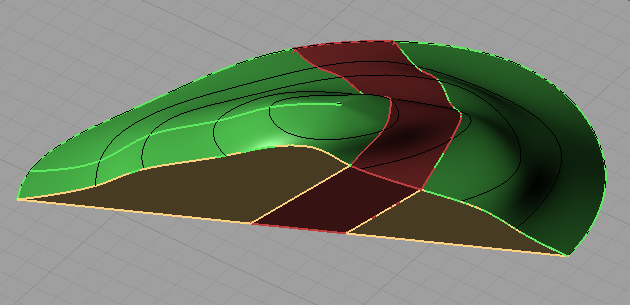Layer (stratum)
A stratum
is a layer of sedimentary rock or soil with internally consistent characteristics that distinguish it from other layers.
The stratum is the fundamental unit in a stratigraphic column. It is bounded by two surfaces, usually considered to be two parallel planes.
The upper bedding plane (top surface) of the stratum is called headwall, while the lower bedding plane (bottom surface) is called footwall.

The thickness of the stratum is the distance between the headwall and footwall. The borehole is the hole drilled from the earth's surface to the stratum in order to determine the position of the stratum. The location of the intersection of the stratum with the earth's surface is called the outcrop.
An example of modeling a layer by using program Rhinoceros:
To model a layer on a topographic surface given by contour lines. The headwall is determined by three borehole - points A, B, C, and the footwall is determined by a point D below the point C.
The solution:
 terrain, headwall and footwall, outcrop
terrain, headwall and footwall, outcrop
 cross-section
cross-section
 thickness of the layer.
thickness of the layer.
Created and translated by Ema Jurkin - 3DGeomTeh - Developing project of the University of Zagreb

 terrain, headwall and footwall, outcrop
terrain, headwall and footwall, outcrop  cross-section
cross-section  thickness of the layer.
thickness of the layer.